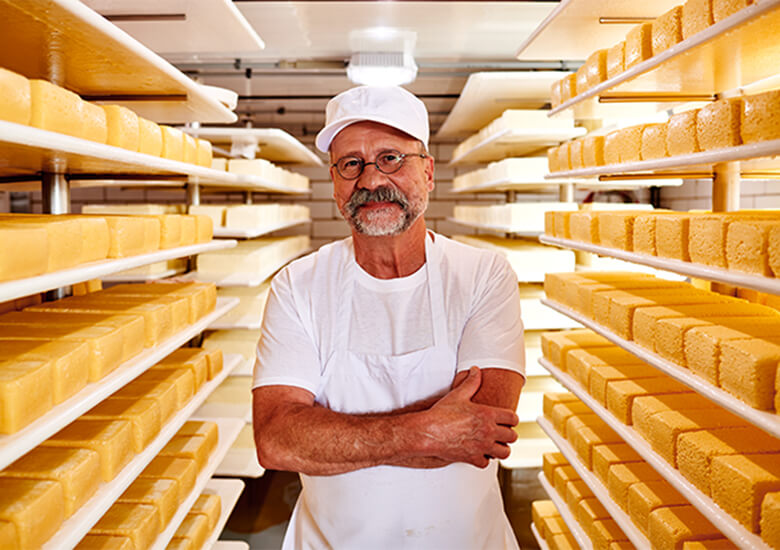Behind the Scenes with Cheese Makers Melbourne: Featuring Floridia Cheese
Behind the Scenes with Cheese Makers Melbourne: Featuring Floridia Cheese
Blog Article
Opening the Keys of Artisanal Cheese Making: A Detailed Do It Yourself Overview
In the realm of culinary workmanship, artisanal cheese making stands as a testimony to the fragile balance between practice and innovation. Each step in the process, from selecting the ideal milk to improving aging techniques, holds within it a riches of knowledge gave via generations. As we start this journey to debunk the art of producing charming cheeses, we are faced with a tapestry of tricks and skills waiting to be deciphered. Join us as we discover the intricacies of this ancient craft, where persistence, science, and art converge to create flavors that tantalize the detects.
Picking the Right Milk
When getting started on the trip of artisanal cheese making, the selection of milk plays an essential duty in identifying the quality and attributes of the end product. The kind of milk selected affects the flavor, structure, and overall account of celebrity. Raw milk, directly from the pet, is liked by several artisanal cheesemakers because of its one-of-a-kind mix of enzymes, bacteria, and taste substances. Making use of raw milk comes with regulations and threats, making pasteurized milk a safer option for beginners.
In addition, the resource of the milk, whether from cows, goats, sheep, or buffalo, contributes distinctive tastes and features to the cheese. Each type of milk brings its own subtleties, permitting for a wide variety of cheese selections to be crafted based on the chosen milk.
Culturing and Coagulating
To start the cheese-making process, the vital actions of culturing and coagulating have to be carefully implemented to transform milk into curds and whey. The kind of society utilized can substantially affect the flavor, texture, and ripening of the last cheese item.

The timing and temperature control during culturing and coagulation are critical variables that influence the final end result of the cheese. Appropriate implementation of these actions is important to guarantee the desired texture, flavor, and consistency of the artisanal cheese being generated.
Draining and Pressing Curds
After the milk proteins have actually coagulated and the curds have actually been reduced to release whey, the next crucial step in artisanal cheese making includes draining and pushing the curds to achieve the wanted appearance and uniformity of the last cheese item. Draining pipes is the procedure of dividing the curds from the whey. This can be browse this site done by transferring the curds into a cheesecloth-lined bowl-shaped sieve or mold and permitting the whey to drain off normally. The moment for draining can differ relying on the type of cheese being made and the wanted wetness web content.
Pressing aids expel any remaining whey and compacts the curds to form a solid cheese wheel. Proper pushing and draining pipes are critical steps that considerably affect the high quality and qualities of the artisanal cheese being produced.
Aging and Flavoring Techniques
Applying careful aging and flavoring strategies is critical in boosting the deepness and intricacy of artisanal cheeses, raising their taste accounts to elegant levels of improvement and elegance. Aging plays a crucial function in creating the unique tastes and appearances that differentiate artisanal cheeses.
Seasoning techniques likewise add significantly to the final preference of artisanal cheeses. Cheesemakers may choose to introduce additional tastes by including ingredients such as herbs, seasonings, or perhaps fruits into celebrity during the production process. Furthermore, some cheeses are cleaned or scrubed with different fluids, such as salt water or alcohol, to enhance their tastes and textures.
Covering and Saving Cheeses

Conclusion
In final thought, understanding the art of artisanal cheese making involves thoroughly choosing the right milk, following accurate culturing and coagulating procedures, draining pipes and pushing curds effectively, and utilizing different aging and flavoring methods. Remember to wrap and keep your cheeses appropriately to make certain optimum taste and appearance development.
Each type of milk brings its own subtleties, enabling for a vast range of cheese varieties to be crafted based on the chosen milk.After the milk proteins have coagulated and the curds have been cut to launch whey, the following essential step in artisanal cheese making entails draining pipes and pushing the curds to attain the wanted appearance and uniformity of the last cheese product. A lot of cheeses must be covered in wax paper or cheese paper to enable them to breathe while shielding them from drying out. For cheeses that require to proceed aging, such as bloomy skins or washed rinds, guarantee they are saved in a trendy setting like a cheese cavern or a fridge set to the appropriate temperature. By paying focus to the covering and storage space of artisanal cheeses, cheese makers and enthusiasts can maintain the integrity of these specials and completely appreciate their intricate tastes.
Report this page